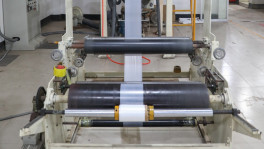Rice millers taking advantage of govt’s stock shortage: Study
Boro crops witnessed a good harvest, but Amon crops suffered a 15 lakh ton deficit, this in turn prevented the government from procuring the grain

The government could not control the rice market due to a multitude of factors – including insufficient stock, failure to meet the procurement target and not importing the grain timely. The rice millers and wholesalers are exploiting the situation by hiking the prices, a study said.
The Bangladesh Agricultural Research Council (BARC) released three research reports at a programme on Tuesday, held at the BARC auditorium to shine light on the recent instability plaguing the market prices of rice, potato and onion.
"Wholesalers think that the government always proclaims its rice stock 30% larger than it really is. Boro crops witnessed a good harvest, but Amon crops suffered a 15 lakh ton deficit. This in turn prevented the government from procuring the grain," the report on rice mentioned.
Present at the event, Agriculture Minister Muhammad Abdur Razzaque said, "The government could not fulfil the rice and paddy procurement target, and its food grain warehouses do not have sufficient stock. The millers and wholesalers are taking advantage of this situation.
"They have taken control of the market. To prevent this from occurring again, the government will make a serious effort to reach the procurement target of rice and paddy in the next Boro season."
Recommending some measures to avoid such a situation in the future, the BARC research advised the government to maintain a stock of at least 12.5 lakh tons of rice in its food grain warehouses each month.
The government must also build the capacity to procure at least 25 lakh tons of rice annually, then gradually build up its capacity to procure 10% of the total harvest each year. While procuring rice, the government should also set the prices by adding a 20% profit margin on top of the production cost.
Besides, the government should develop techniques to reduce the cost of rice production, employ intensive monitoring on the market and mills, and ensure timely intervention to help keep the market stabilised.
Coordinator of the research team and Vice Chancellor of University of Global Village (UGV) Dr Jahangir Alam pointed out that along with an insufficient stock, the government's less than sufficient intervention have caused the instability in the rice market.
The research further revealed that millers hide their profit earned through byproducts while discussing rice prices with the government. The millers made profits between Tk4.6-Tk9.5 per kg of rice between 2017 and 2019.
If this profit is left out of the equation, the millers seem to suffer losses. But they make a hefty amount of money if this profit is considered.
The research also reveals that the farmers are suffering losses. Between 1972 and 2020, the market price of rice has increased by 4%-5% per year, but the actual price has dropped by 2%-3%.
Between 2009 and 2020, the cost of rice cultivation went up by around 3% per kg each year, but the farmers' net profit dropped by 8% during the same years.
Two other reports revealed the reason behind price hikes of potato and onions.
The report mentioned that the government could not take any steps to control the price of potatoes due to farmers and traders stocking the vegetable hoping for a price increase, lack of supply from the cold storages, repeated sale of cold storage receipts and lack of information on potato exports and current market condition.
For the price increase of potatoes, the BARC report blamed Bangladesh's dependence on imports from India and the dishonesty of local trade syndicates.
To mitigate the ongoing situation, the BARC report recommended a number of steps, including formation of a price commission to set the prices of essential goods, effective steps by the government to keep the market stabilised.


 Keep updated, follow The Business Standard's Google news channel
Keep updated, follow The Business Standard's Google news channel
















